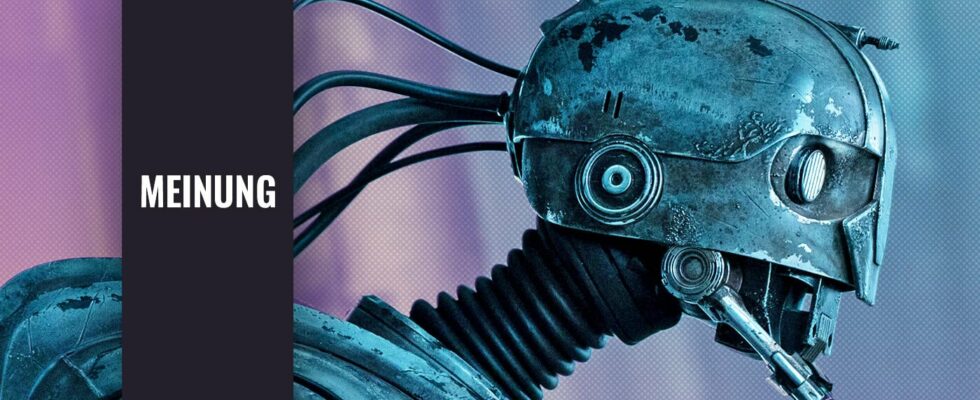The Goonies in Space: Skeleton Crew has delivered on its promise. What started as an homage to the Amblin films from the 1980s has developed in recent weeks into a gripping sci-fi adventure with pirates, spaceships and a treasure of gold. Lovable characters and an exciting mystery at the center of the story – a lot of good things come together here.
Actually, Skeleton Crew would be the perfect Star Wars movie watch again and again can. Entertaining, without much connection to mythology and extremely charming. To stay with the nostalgic presentation of the project: You can literally see the VHS cassette with a worn-out tape in front of you. However, Skeleton Crew is not a film, but a series. And you can’t rewind them so quickly.
Skeleton Crew originally started out as a Star Wars film and was later adapted into a series
Like so many other Star Wars projects, Skeleton Crew has a long history. Director Jon Watts and screenwriter Christopher Ford pitched Space Goonies to Lucasfilm back in 2017 – back then as a moviewhich, like the recently released Rogue One, moves away from the Skywalker saga and stands on its own two feet. But just a year later, these projects became impossible.
Solo: A Star Wars Story was responsible for this, which went down in franchise history in May 2018 as the first financial flop. A momentous event that triggered a massive rethink at Lucasfilm and put all film projects that were not part of the Skywalker saga on hold. Even a popular name like Obi-Wan Kenobi had no chance on the big screen, so deep was the solo shock.
At the same time, the launch of Disney+ and the resulting demand for streaming content revealed one thing welcome emergency solution: Lucasfilm turned its focus to producing live-action series. The success of The Mandalorian initially supported the decision. However, it is now clear what we have lost: the cinematic self-image that distinguished Star Wars for decades.
Star Wars stories first developed for the cinema now unfold in multiple episodes on Disney+, from Obi-Wan Kenobi to The Book of Boba Fett. Skeleton Crew is the latest example. And after the end of the first season, the conceptual wrong decision can no longer be denied: everything about this space adventure cries out to be told in a maximum of 121 minutes.
Everything about Skeleton Crew screams of a feature film that could have been told in two hours
If we break down the essential plot points of the eight episodes, we come up with a classic three-act structure. Skeleton Crew is never interested in working as intensively with the medium of series as Andor does in his sophisticated arcs including numerous characters and parallel narrative threads. The monster-of-the-week concept of the first Mando seasons doesn’t apply here either.
The first three episodes of Skeleton Crew pretty much cover the first act of a film: Wim, Fern, Neel and KB (involuntarily) answer the call of adventure as they transport the Onyx Cinder from At Attin to Port Borgo. With Jod Na Nawood, the next three episodes move into the middle part, which expands on the central conflicts, before we move on to the action-packed finale for two final episodes.
Condensed down to the crucial stages, this story could easily be summarized in the form of a full-length feature film grasp. Episode 4 makes this most clear: the chapter is not only stylistically out of the ordinary. The stop on At Achrann can easily be left out of the season if the key information we get there is conveyed in the previous Kh’ymm chapter, for example.
Of course, a secret sister planet to At Attin fuels the mystery at the center of the series. Away from the collected signposts, Skeleton Crew never returns to the war scene. And the coming-of-age aspects that are negotiated between children and adults are also present in variations in many other scenes. This is just about filling out another season.
With Skeleton Crew, Lucasfilm missed the chance to make a Star Wars film that you can watch in a loop
The fact that Skeleton Crew has become a series doesn’t ruin the project. Nevertheless, the thought doesn’t let go of what kind non-binding pleasure This story could have been if it had taken the final step towards The Goonies and been released in the cinema as a two-hour adventure film. This film might even have been the freedom that Lucasfilm was looking for.
Other studios have successfully taken this step with their franchises. Warner tried standalone blockbusters like The Batman and Joker. 20th Century Studios brought the Predator back through an unusual perspective in Prey, set several centuries in the past. And with the Spider-Verse, Sony launched a great Marvel series beyond any MCU commitment.
The irony is: Lucasfilm was already at this point with the films that were released under the “A Star Wars Story” label. Rogue One exceeded expectations, Solo disappointed – and still enjoys a long life in the home theater because it’s perfect as one of those adventures you you can just watch it on a Sunday evening. It’s high time Lucasfilm brought back these Star Wars films.
